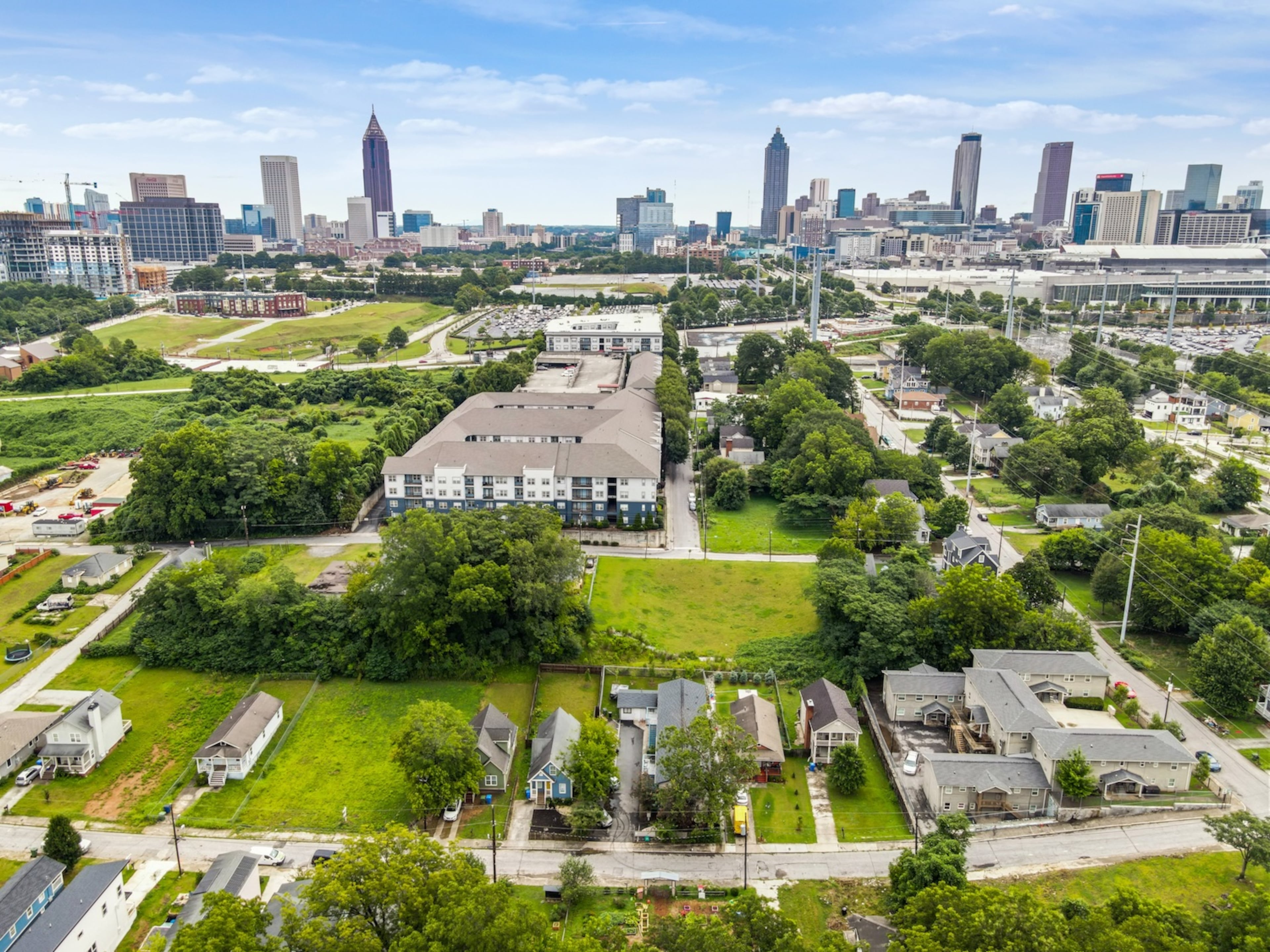Dickens’ $1.3B housing plan is ambitious: But will it solve the affordability crisis?

In late September, Mayor Andre Dickens said he wants to pour $5 billion into the city using a politically controversial economic development tool called a tax allocation district, with $1.3 billion going toward housing.
It would allow the city to create an additional 10,000 units of single- and multifamily housing, on top of the 20,000-unit goal the mayor announced in 2022, according to Dickens’ chief of staff, Courtney English.
English is leading the effort, called the Neighborhood Reinvestment Initiative, to revitalize the city’s south and west sides by extending the shelf life of TADs. They will expire over the next five to 13 years, and Dickens wants approval to extend them beyond 2050.
TADs allow Atlanta to freeze the property tax base in designated areas and funnel all new revenue above that base into redevelopment funds.
But there are doubts about whether that is the most effective way to boost housing stock for low-income residents, and there is concern that extending them could hasten displacement and thereby worsen the very problem they are meant to fix.
Julian Bene, a former member of the city’s economic development authority, Invest Atlanta, is skeptical of TADs and their ability to create affordable housing and said they divert resources away from schools.
Bene said extending the TADs would be a “backdoor tax increase” because the school system would have to raise taxes to cover the loss of revenue.
“The TADs have a very poor record on affordable housing. They’re not the right mechanism,” Bene said. “This is money that belongs to the schools and the general funds of the city … all of which are financially stressed at the moment.”
But English said the plan is a must, as the city wrestles with income inequality between Black and white households and a lack of economic mobility.
A memo English shared with The Atlanta Journal-Constitution said 71% of TAD funding had supported affordable housing in the city. It was identical to an emailed press release published by the group Atlantans For Safety on Thursday.
The TADs are aimed at neighborhoods that lack amenities, infrastructure and affordable housing, including English Avenue, Vine City, downtown, Metropolitan Parkway, Bankhead, Campbellton Road and MLK Boulevard, the document states.
“By any statistical measure, these communities are faring the worst in our city and were intentionally starved of investment due to malicious policy decisions like redlining,” the six-page memo adds.
“This is a generational moment for the city of Atlanta … we can build a city of healthy, whole, connected neighborhoods,” English said in an interview with the AJC.
TADs do not take money away from schools, he added, and anyone arguing otherwise was “factually incorrect.”
Atlanta Public Schools has clashed with the city in the past because of overdue Beltline TAD payments. That was during English’s time as school board chairman. The mayor’s office will need to persuade the school system, and Fulton County government, to forgo tax revenue it would have been on course to collect after the districts expire.
English argued that TADs grow the overall tax base, improving housing, health and safety and outcomes in schools.
If extended, English said the city can leverage the projected TAD revenue to issue bonds for affordable housing.
He did not give a timeline for when the city would deliver the additional 10,000 units, or if it would all happen during Dickens’ time in office. But he said the goal was to get them “online as fast as possible.”
A similar policy is called tax increment financing, in other U.S. cities. In Atlanta’s case, funds for eight TAD districts are managed or administered by Invest Atlanta.
Some experts argue that, if left unchecked, the economic development tool can perpetuate inequality, especially as neighborhoods, including those on the Beltline, are thriving and gentrifying.
By design, they exist to lift up distressed neighborhoods. But they should end when they have served their purpose so the city can redirect revenue from higher property taxes and redevelopment to schools, basic city services and affordable housing, said Dan Immergluck, author of ”Red Hot City: Housing, Race, and Exclusion in Twenty-First-Century Atlanta” and professor emeritus at Georgia State University.
“The trend in good policy has been to shorten them,” Immergluck argued, adding that Dickens’ proposal “is the opposite of good practice.”

Immergluck said the Beltline and some other TADs are no longer distressed.
Only 12% of Beltline TAD affordable housing units are deeply affordable, or serve families under 50% of the area median income — an income limit of $51,000 a year for a family of four, according to Immergluck’s analysis of Beltline data.
An alternative solution is to put more money into the city’s Affordable Housing Trust Fund and raise commercial property taxes to create additional revenue for housing, he said.
In addition, Dickens is board chairman of Invest Atlanta, which will largely hold the purse strings of the TAD revenue, with limited City Council oversight and “no accountability,” Bene said.
Immergluck said the Invest Atlanta board is effectively a rubber stamp for the mayor.
“It’s just creating these shadow governments which are going to control, in their own words, billions of dollars in public dollars,” Immergluck said. “They will only be able to spend those dollars in these areas which are now mostly gentrifying, starting to gentrify or, in some cases, are already affluent.”
But English said Invest Atlanta operates under the same rules as any other public agency and is subject to open records and meetings laws. He added representatives from the City Council, Fulton County government, Atlanta Public Schools and residents sit on the board.
“Let’s take a walk through English Avenue … Vine City … you tell me whether or not (they have) the amenities anybody would want to live in a healthy, thriving neighborhood,” English said.


